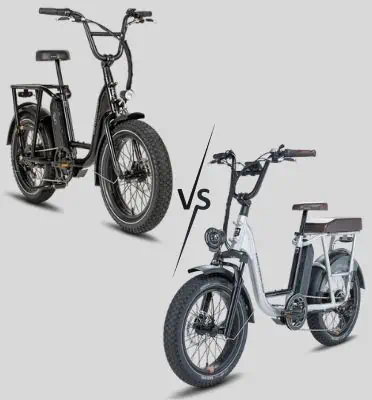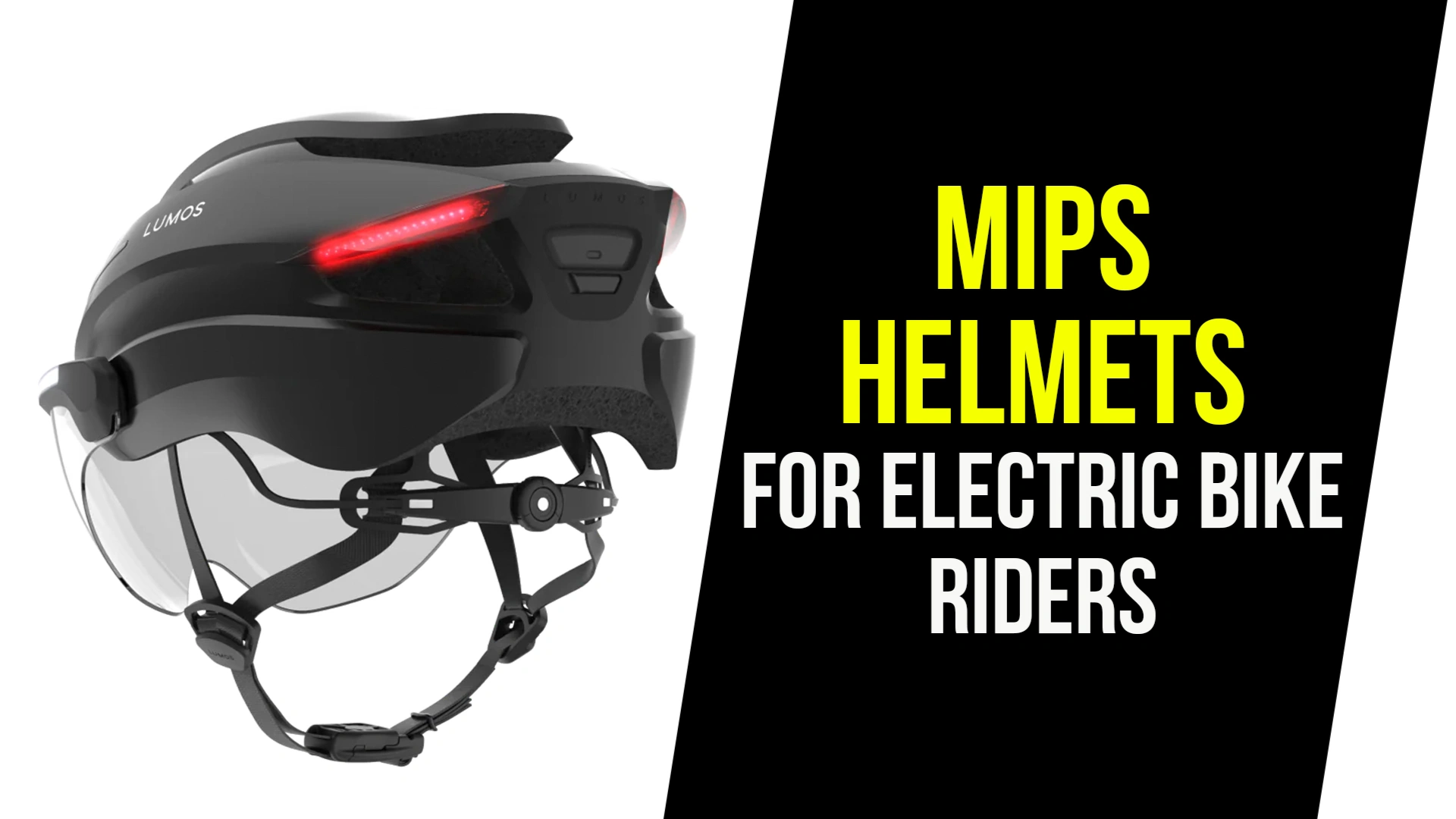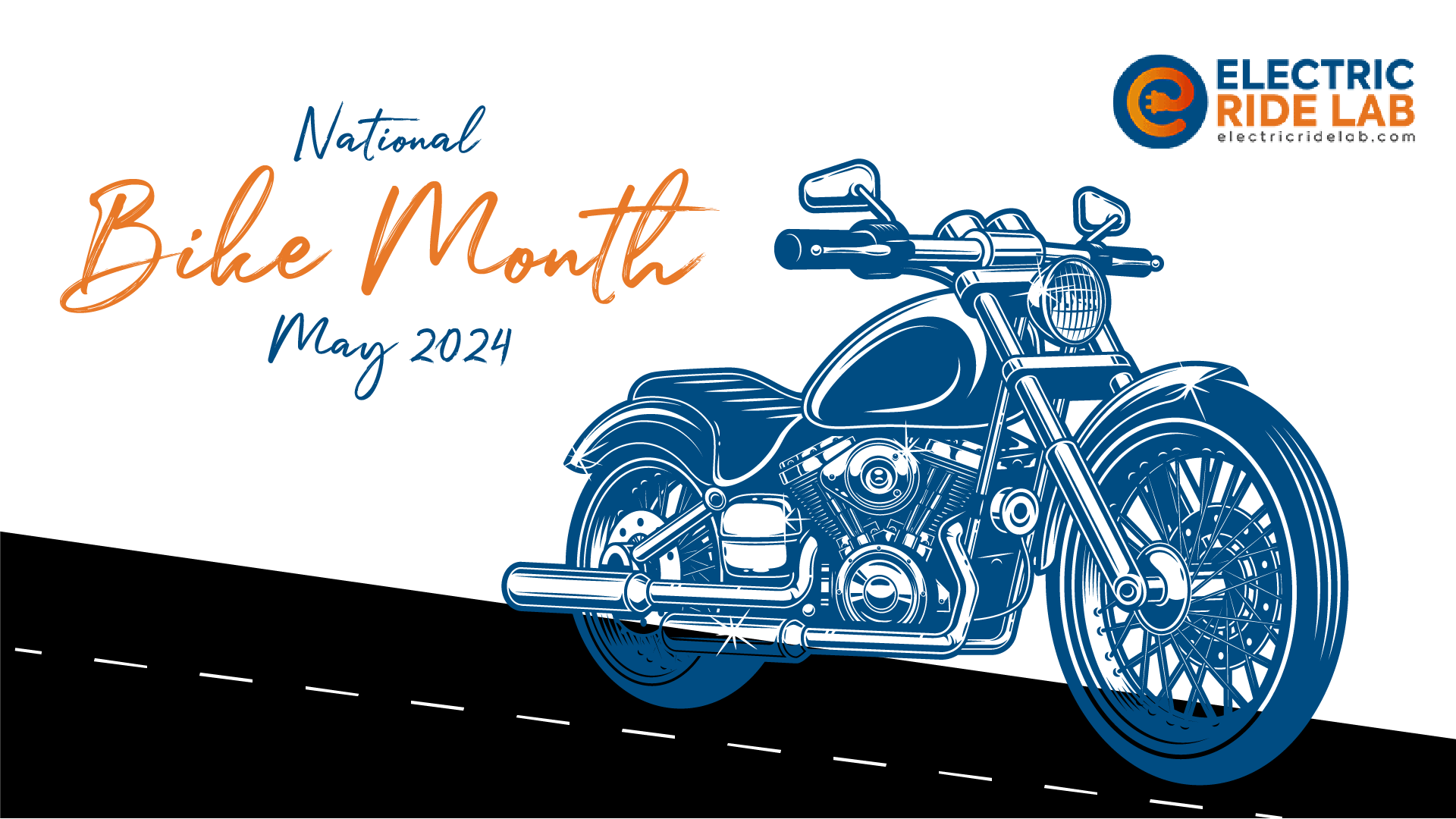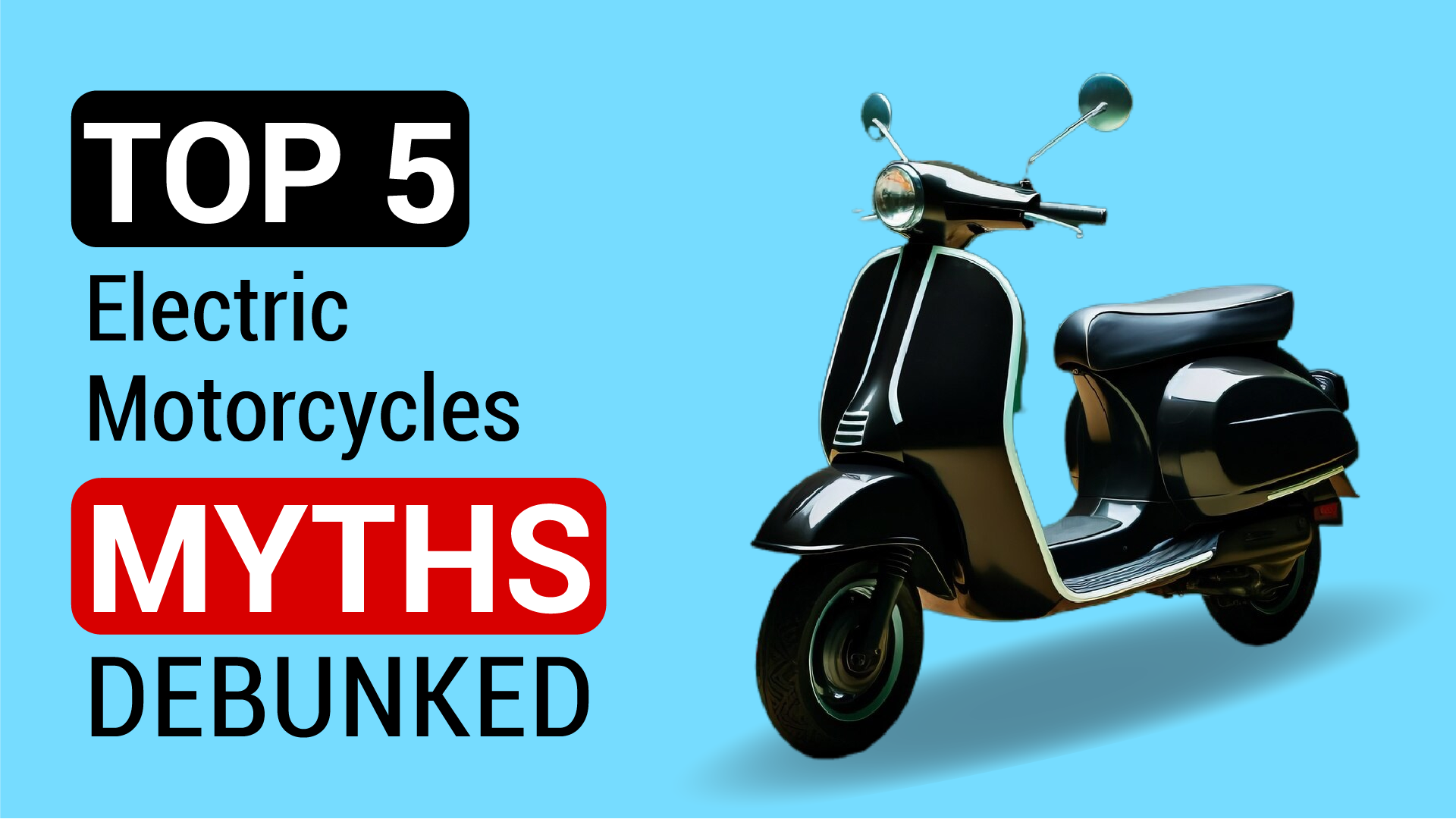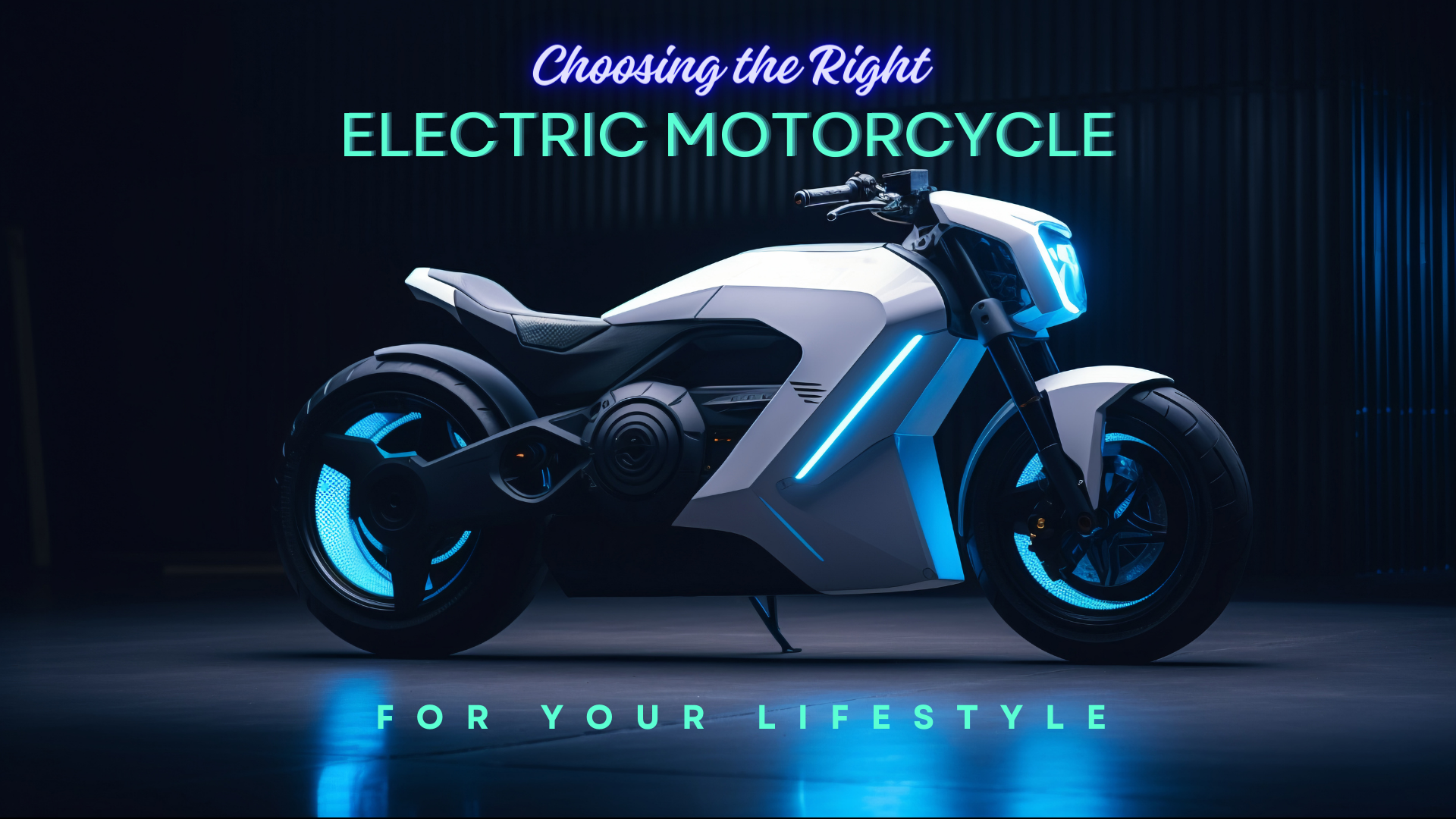Choosing the Radrunner 2 vs Radrunner Plus will come down, not only to how much you’re willing to spend, but, what you’re looking for in a utility electric bike. The Radrunner Plus might seem like the best option since it’s the upgraded version of the Radrunner 2, but is it really worth the extra cash?
We compared the two models from all aspects and by the time you finish reading this article, you will know which model best suits your needs.
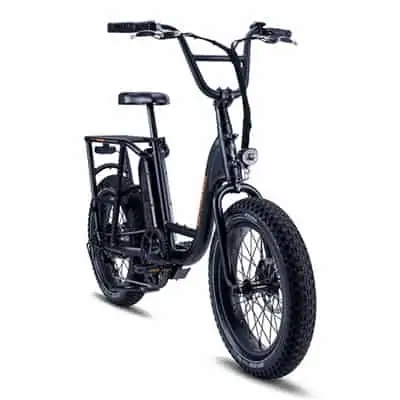
RadRunner 2
Overall Rating:
- Riders Weight Limit | 300 lbs
- Motor | 750W Geared Hub Motor
- Range | Up to 25-45 Miles per Charge
- Battery | 48V, 14Ah Lithium-Ion Battery
- Speed | 20 MPH
VS
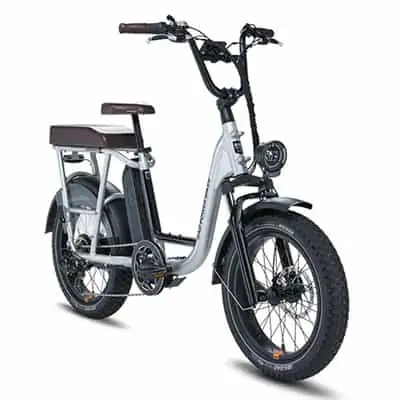
Radrunner Plus
Overall Rating:
- Riders Weight Limit | 300 lbs
- Motor | 750W Geared Hub Motor
- Range | Up to 45 Miles per Charge
- Battery | 48V, 14Ah Lithium-IonBattery
- Speed | 20 MPH
Also Related:
How Fast Can Rad Power Bikes Go? Top Speed of Each Model
Differences Between the Radrunner 2 and the Radrunner Plus
Motor and Power
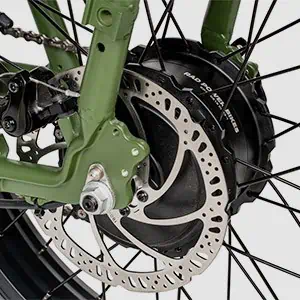
Radrunner 2: Motor and Power
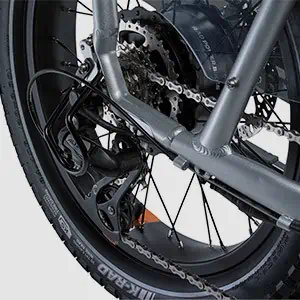
Radrunner Plus: Motor and Power
Both e-bikes are equipped with 750-Watt hub motors, however, there might be a slight difference between the two in terms of power. In the Radrunner Plus’ description, Rad Power Bikes clearly states how much torque the upgraded model can generate (80 Nm) but doesn’t do the same for the basic model – the Radrunner 2.
I’m not sure as to why Rad Power did this or if it is just a mistake, but keep in mind that the Radrunner Plus is a more versatile e-bike than the standard Radrunner.
Range
Both bikes are estimated to be able to cover around 45 miles of range on a single charge. We have compiled the real-world range numbers for both e-bikes in the table below.
| Power Level | Radrunner 2 | Radrunner Plus |
|---|---|---|
|
Highest pedal-assist setting |
31.06 miles |
23.6 miles |
|
Lowest pedal-assist setting |
46.65 miles |
41.5 miles |
Please note that both tests were carried out by different riders under different conditions, so the table isn’t meant to compare, but rather to give you an insight into how much range they can expect to get from either of the two bikes.
Nevertheless, the Radrunner 2 might be able to cover more distance on a full charge than the Radrunner Plus. This is because it weighs less than the latter and isn’t equipped with a suspension fork (one of the biggest disadvantages of suspension forks is that they slow down bikes).
Climbing Ability
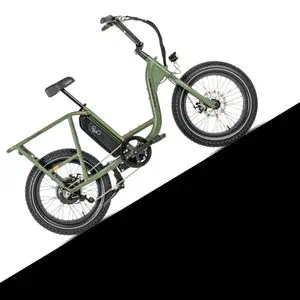
Radrunner 2: Climbing Ability
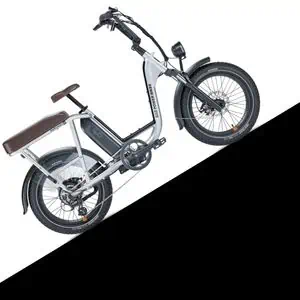
Radrunner Plus: Climbing Ability
The Radrunner Plus’ drivetrain makes it a better hill climber than the standard Radrunner. The former comes with a 7-speed drivetrain while the latter is restricted to just one gear (single-speed drivetrain).
Also Related:
How Heavy Do Rad Power Ebikes And Are There Weight Limits?
Ride Smoothness
As mentioned earlier, the Radrunner Plus is a more versatile electric bike than the Radrunner 2. It comes with a pair of suspension forks that smoothen out bumpy rides.
The Radrunner 2 on the other hand is a rigid e-bike and it might not be suitable for riding on uneven terrain.
Weight Limit and Net Weight
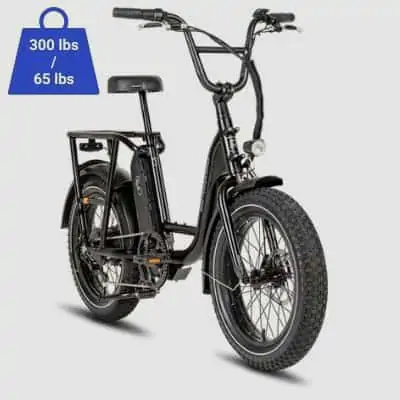
Radrunner 2: Weight Limit and Net Weight
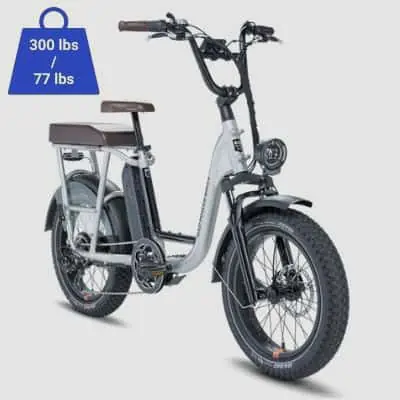
Radrunner Plus: Weight Limit and Net Weight
The Radrunner 2 weighs about 65 lbs (29.5 kg) and can support up to 300 lbs/136 Kg of weight. The upgraded version, the Radrunner Plus, has a net weight of 77 lbs (34.9 kg) and a recommended payload capacity of 300 lbs.
Both e-bikes are capable of supporting up to 300 lbs of weight, but the Radrunner does it while still maintaining a lightweight frame. So, if you’re someone who’s looking for a lightweight electric bike, the Radrunner 2 might be a good place to start.
Portability
Neither of the bikes is portable in the true sense of the word. The Radrunner 2 stands at over 42 inches tall (from the bottom of the tires to the handlebars) and measures up to 68 inches in length – its frame is not collapsible/foldable. Its dimensions, however, aren’t as bulky as the Radrunner Plus’ which has a handlebar height of 45.75” and a total length of 71.5”.
The Radrunner Plus is also not foldable.
Display and Controls
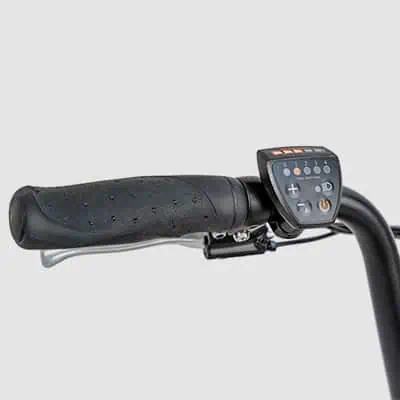
Radrunner 2: Display and Controls
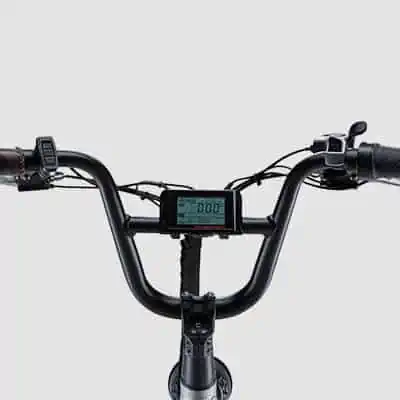
Radrunner Plus: Display and Controls
The Radrunner 2 comes with a pretty simple LED control panel that indicates how much battery power riders have left and what pedal assist level they’re currently logged into. The e-bike also has a headlamp on/off button, a power button, and “+” & “-“ buttons for switching between PAS levels.
The Radrunner Plus on the other hand is equipped with a more advanced meter than the standard Radrunner’s. Its LCD e-bike displays speed, distance traveled, current pedal-assist level, motor wattage, battery level, etc.
The e-bike also allows riders to tweak the bike’s top speed and set the wheel size for the speed sensor. If you desire a more functional cockpit, the Radrunner 2 might be the best option for you.
Also Related:
Where Rad Power Bikes Are Made and Are They Any Good?
Water Resistance
All Rad Power electric bikes are designed to operate optimally in wet conditions. Rad Power Bikes company doesn’t specify the ingress protection rating for any of its products, however, it’s safe to guess that their bikes are resistant to dust (and other small particulates) and water splashed from all directions (IP54).
According to Rad Power Bikes, their bicycles are “…designed to withstand rainy Seattle weather, meaning they perform well in wet conditions.”
Suspension and Tire
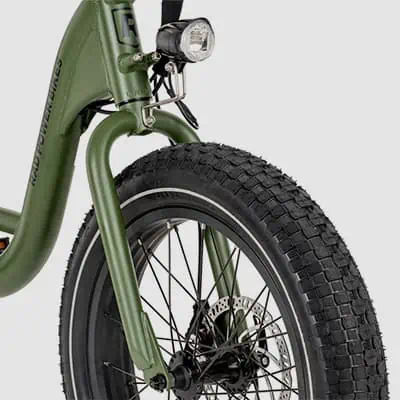
Radrunner 2: Suspension and Tire
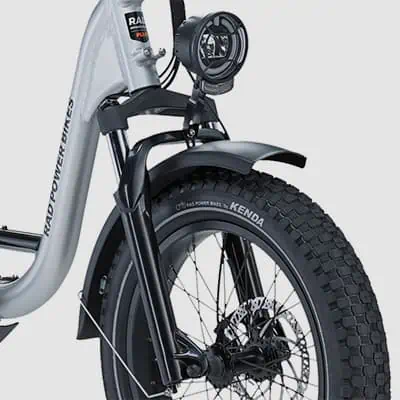
Radrunner Plus: Suspension and Tire
The Radrunner 2 is a rigid electric bicycle. It does not come with a suspension system. The bike’s 20” by 3.3” pneumatic tires are the only components that provide some form of cushioning against terrain feedback.
Nevertheless, the upgraded version comes with RST spring forks that allow for up to 60mm of wheel travel. It is also equipped with the same tires as the Radrunner 2.
Upgrades and Accessories
The Radrunner Plus is a massive upgrade from the Radrunner 2. It comes standard with a lot of useful accessories that aren’t pre-installed on the base model.
Some of these accessories include; a pair of full-length fenders, a padded passenger seat, skirt guards for the rear wheel, and foot pegs along either side of the rack’s tubing. Rad Power Bikes also made some serious upgrades to a few of the standard version’s components.
For instance, they replaced the Radrunner 2’s rigid forks with spring forks, added six more cassettes to the bike’s drivetrain, attached a more advanced meter to the handlebars, and installed a bigger headlight on the Radrunner Plus.
Even if you decide to purchase the standard Radrunner and equip it with the Plus’ accessories you’ll still end up spending close to 400$ (the price margin between the Radrunner 2 and the Radrunner Plus). That total doesn’t include the cost of purchasing a suspension fork or even fitting it onto the bike’s frame nor does it cover the expense of buying a 7-speed drivetrain and a Shimano Acera derailleur.
Also Related:
How Long Do Electric Bikes Last: Expectations vs. Reality

RadRunner 2
Overall Rating:
- Riders Weight Limit | 300 lbs
- Motor | 750W Geared Hub Motor
- Range | Up to 25-45 Miles per Charge
- Battery | 48V, 14Ah Lithium-Ion Battery
- Speed | 20 MPH
VS

Radrunner Plus
Overall Rating:
- Riders Weight Limit | 300 lbs
- Motor | 750W Geared Hub Motor
- Range| Up to 45 Miles per Charge
- Battery| 48V, 14Ah Lithium-IonBattery
- Speed | 20 MPH
Design and Engineering
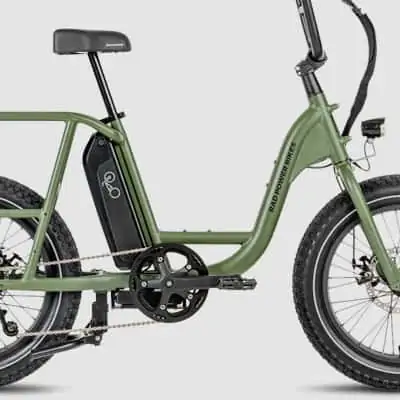
Radrunner 2: Suspension and Tire
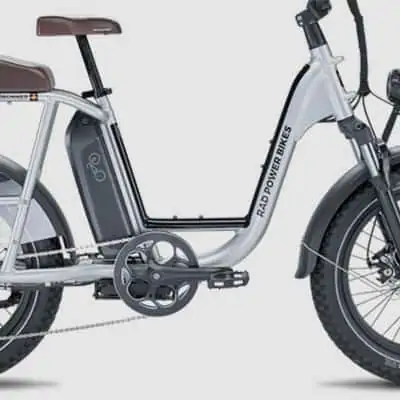
Radrunner Plus: Suspension and Tire
Both the Radrunner 2 and the Radrunner Plus come with step-through frame designs. Their frames are cast from 6061 aluminum; a versatile alloy that is well known for its remarkable resistance to corrosion.
Rad Power also does a good job in reinforcing the Radrunner 2 and Radrunner Plus’ frames against flex.
Since both models are designed for heavy-duty purposes, and step-through frames are generally perceived to be structurally weaker than step-over frames, the design team at Rad Power Bikes came up with a great idea to weld extra tubes to certain parts of the bike – there’s one just under the connection between the down tube and the head tube and the other connects the seat tube to the down tube.
Their handlebars are swept back, promoting a more upright riding position. The Radrunner 2 and the Radrunner Plus aren’t so different design-wise. They have the same build and almost share equal measurements.
For a tabular representation of the differences between the Radrunner 2 and the Radrunner Plus, check the comparison table below.
| Comparison Category | Radrunner 2 | Radrunner Plus |
|---|---|---|
|
Motor and power |
750-Watt geared hub motor |
750-Watt geared hub motor |
|
Range |
25 to 45 miles on every full charge |
Up to 45 miles on a single charge |
|
Climbing ability |
Can climb moderately-steep inclines |
Better hill climber thanks to its 7-speed drivetrain |
|
Ride smoothness |
Great for riding on paved roads |
Designed for riding on different types of terrain |
|
Net weight |
65 lbs |
77 lbs |
|
Weight limit (payload capacity) |
300 lbs |
300 lbs |
|
Geometry |
– Handlebar height: 42-45 inches- Wheelbase: 45 inches- Handlebar width: 27 inches |
– Handlebar height: 45.75 inches – 47.25 inches- Wheelbase: 46.5 inches- Handlebar width: 27 inches |
|
Display and controls |
Simple LED panel |
Grayscale LCD display with data read-out |
|
Water resistance |
IPX4 or IP54 |
IPX4 or IP54 |
|
Suspension and tire |
Rigid forks20” by 3.3” tires |
Front suspension forks 20” by 3.3” tires |
|
Frame design |
Step-through |
Step-through |
|
Accessories and utilities |
Frame-integrated rear rack, front and rear lights (that also work as the brake lights), and a double-leg kickstand. |
Full-length fenders, front and rear lights (that also work as the brake lights), skirt guards, foot pegs, a single-leg kickstand, and a padded passenger seat. |
Also Related:
Pros and Cons of the Radrunner 2
Pros
- Riders can adjust the seat’s height and also adjust the angle of the handlebars.
- The bike comes with a 14-magnet cadence sensor. This should make the motor a bit more responsive to pedal strokes than e-bikes with 12-magnet cadence sensors (e.g. the Aventon Pace 350, the Radcity 5 Plus, etc.)
- It is an affordable cargo electric bike. Most of the cargo e-bikes available on the market today cost over $1700. The Cero One, another small cargo e-bike, costs almost three times the Radrunner 2’s price ($3799) and it supports the same amount of weight that the latter does. One area where it outclasses the Radrunner 2 is range (the Cero One can reportedly cover up to 105 miles of range on a single charge of its 504 Wh battery)
Cons
- There isn’t much clearance between the bike’s chainring and its kickstand. This causes the chain to slap against the kickstand when it’s retracted.
- It doesn’t come with a suspension system.
- For a bike this powerful, it wouldn’t have been such a bad idea if Rad Power actually installed hydraulic brakes on the unit instead of cable brakes.
Pros and Cons of the Radrunner Plus
Pros
- The Radrunner Plus is one of the most passenger-friendly electric bikes on the market.
- It comes with a dedicated suspension system.
- Unlike the throttles on most Aventon e-bikes, this bicycle’s actuator works from a complete stop.
Cons
- It is a heavy electric bike – even heavier than the Radrunner 2.
- One would have thought that Rad Power Bikes would address the issue of brakes on the Radrunner Plus; they didn’t. It, like the base Radrunner, still comes with mechanical disc brakes.
Also Related:
Ride1Up 700 Series vs Aventon Level – Head to Head Comparison
Who’s the Radrunner 2 For
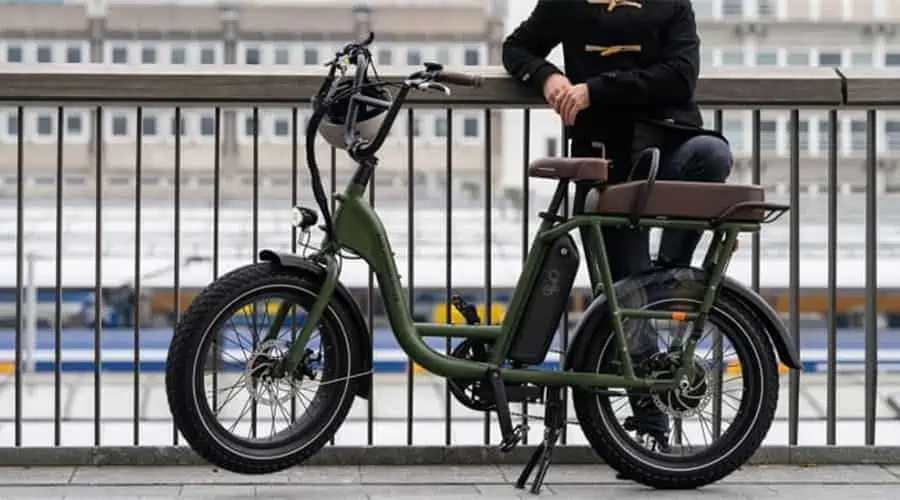
If you’re in the market for a budget-friendly cargo e-bike, the Radrunner 2 might just be the best electric bike for you. Also, if you’re looking for a multi-purpose e-bike, you might want to consider this electric bicycle.
It is not as large and awkward-looking as regular cargo e-bikes so you can ride it to work or school.
Who’s the Radrunner 2 ‘NOT’ For
The Radrunner 2 is not designed for off-road riders and aggressive e-bike riders. It’s powerful but very limited in its capabilities.
It’s also not a good option for riders looking for lightweight machines. It weighs 65 pounds, which is almost two times the weight of the Ride1Up Roadster V2.
Who’s the Radrunner Plus For
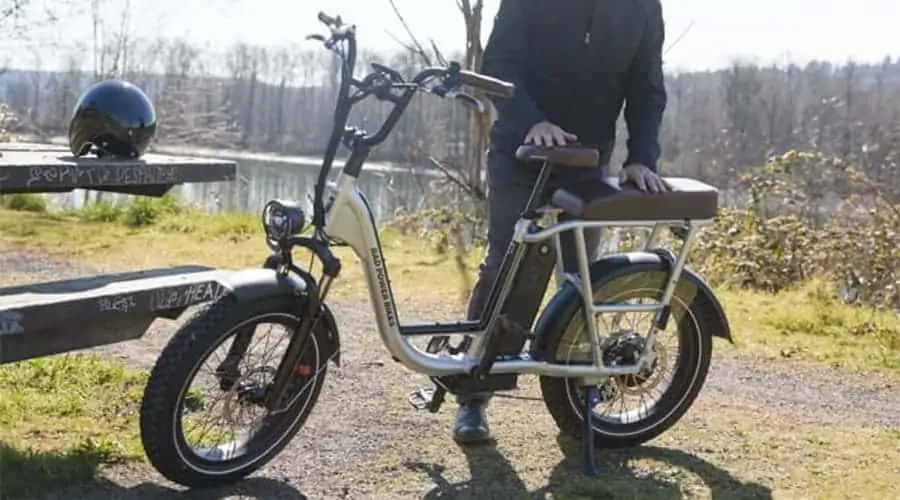
Anyone from commuters to off-road riders will enjoy using this electric bike. It is even better adapted to riding in wet conditions than the Radrunner 2.
Who’s the Radrunner Plus ‘NOT’ For
The Radrunner Plus has a top speed of about 20 mph. While this threshold can be increased, don’t expect to get more than 25 miles an hour out of this bike. So, if you’re looking for an electric bike that goes really fast, find a more powerful unit, this is not the one.

RadRunner 2
Overall Rating:
- Riders Weight Limit | 300 lbs
- Motor | 750W Geared Hub Motor
- Range | Up to 25-45 Miles per Charge
- Battery | 48V, 14Ah Lithium-Ion Battery
- Speed | 20 MPH
VS

Radrunner Plus
Overall Rating:
- Riders Weight Limit | 300 lbs
- Motor | 750W Geared Hub Motor
- Range| Up to 45 Miles per Charge
- Battery| 48V, 14Ah Lithium-IonBattery
- Speed | 20 MPH

